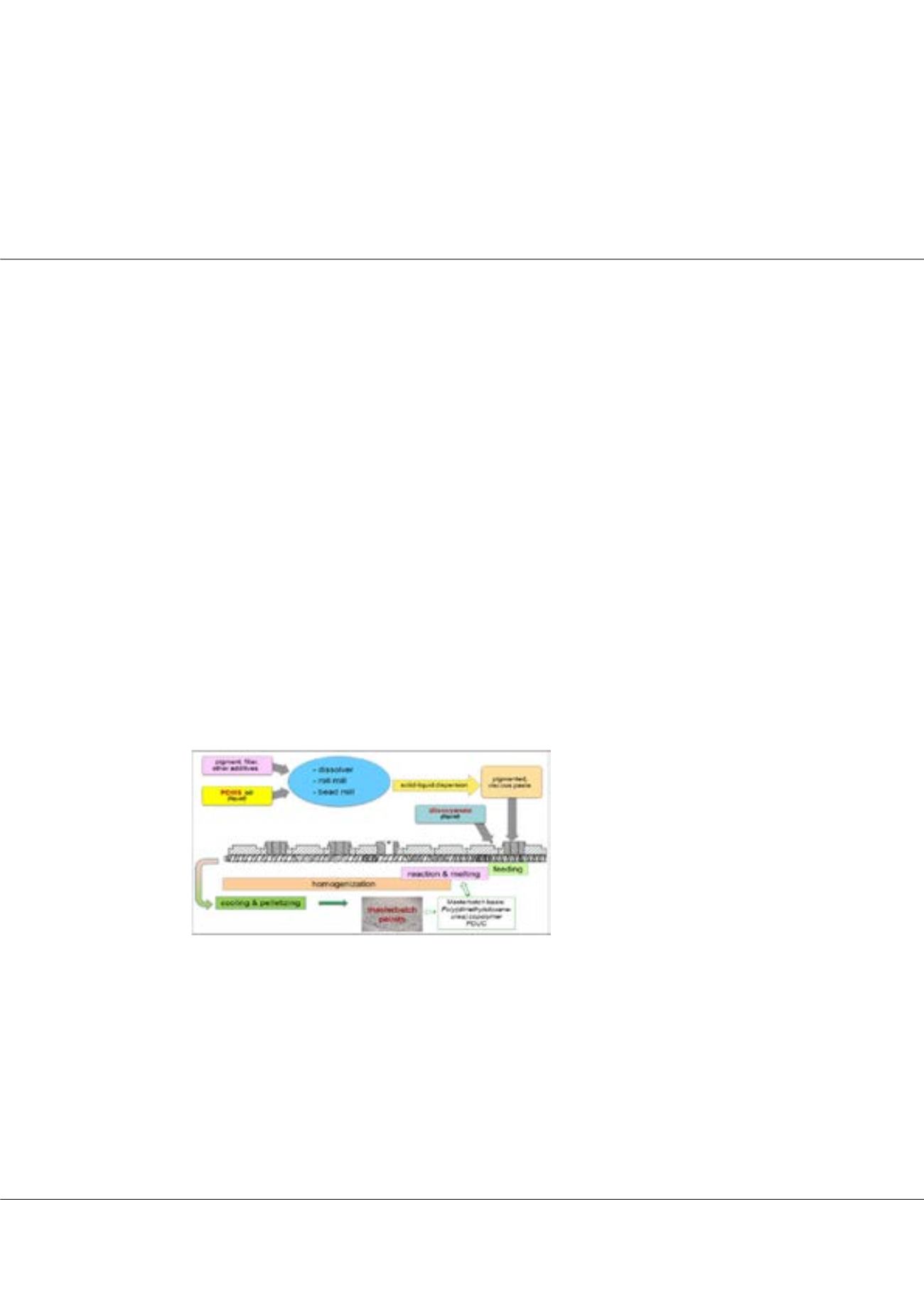

Page 62
Notes:
conferenceseries
.com
Volume 5, Issue 5
Res. Rev. J Mat. Sci. 2017
ISSN: 2321-6212
Advanced Materials 2017
September 07-08, 2017
September 07-08, 2017 | Edinburgh, Scotland
Advanced materials & Processing
11
th
International Conference on
Advanced poly dimethylsiloxane-urea copolymer based masterbatches with multiple functionality
Hans-J. Radusch
1
, Matthias Huebner
2
, Friedhelm Roeber
2
, André Wutzler
3
and
Nadine Poenisch
4
1
MLU Halle, Germany
2
DAW Nerchau, Germany
3
PSM Merseburg, Germany
4
KUZ Leipzig, Germany
O
ptical and esthetic modification is a basic need for polymer application in all technical and consumer fields. Colorants are used
in broad volume to satisfy the demand of costumers for that purpose. Organic or inorganic colorants are included in a carrier
polymer, which should help to dose the colorant precisely, to mix it homogeneously, to be compatible with the matrix, and it should
not influence the mechanical and rheological properties unfavourably. A colorant masterbatch on the basis of polydimethylsiloxane-
polyurea copolymer (PDUC) was developed. The masterbatch was generated by an innovative processing technology coupling a
pre-dispersion step and a fluid component based reactive extrusion step. A specific twin-screw extruder with feeding units is used
for the liquid initial components polydimethylsiloxane (PDMS) including the pre-dispersed colorant as well as the diisocyanate.
The precise stoichiometric ratio of the components as well as the optimization of residence time of the polymer in the extruder in
concern to the reaction time of the components allowed the generation of the PDUC based masterbatch. Different isocyanates and
aminopropyl terminated PDMS were used. A higher number of thermoplastics was involved into the investigation of the suitability
of the generated masterbatches. Beside the nearly universal applicability of the masterbatch, the improvement of processibility -
expressed by lowering of the viscosity, reduction of energy consume of the extruder or reduction of rejection forces at injection
molding - could be demonstrated. Thus, the masterbatch proves to be not only an effective colorant, but also an internal lubricant.
The good dispersion of the pigment particles was demonstrated by optical microscopy. Stress-strain measurements proved that no
significant negative influence of the new masterbatch in concentrations < 5 % on the mechanical properties of the investigated
thermoplastics could be observed. Furthermore could be shown that the masterbatch composition and manufacturing technology is
suitable as carrier for the inclusion of nano-particles into polymer materials.
Biography
Hans-Joachim Radusch is an expert in the field of the development of new polymer materials by blend and composite technologies under special consideration
of nanofillers and nature based polymers. He graduated with a PhD thesis in the field of polymer processing in 1975. After his PhD study, he was employed in
industry before he returned to Technical University Merseburg, where he habilititated with a thesis on polymer blends in 1985. 1989 he became a professor of
Polymer Materials Technology at the Technical University Merseburg, and 1994 he was called for a full professorship for Polymer Technology at the Martin Luther
University Halle-Wittenberg. Since more than 30 years he has a lot of experience in modification of polymers by reactive polymer processing as well as polymer
materials characterization.
hans-joachim.radusch@iw.uni-halle.deHans-J. Radusch et al., Res. Rev. J Mat. Sci. 2017, 5:5
DOI: 10.4172/2321-6212-C1-005
Figure1:
Masterbatch generation by coupled
dissolver pre-dispersion and reactive twin-
screw mixing technology.
















